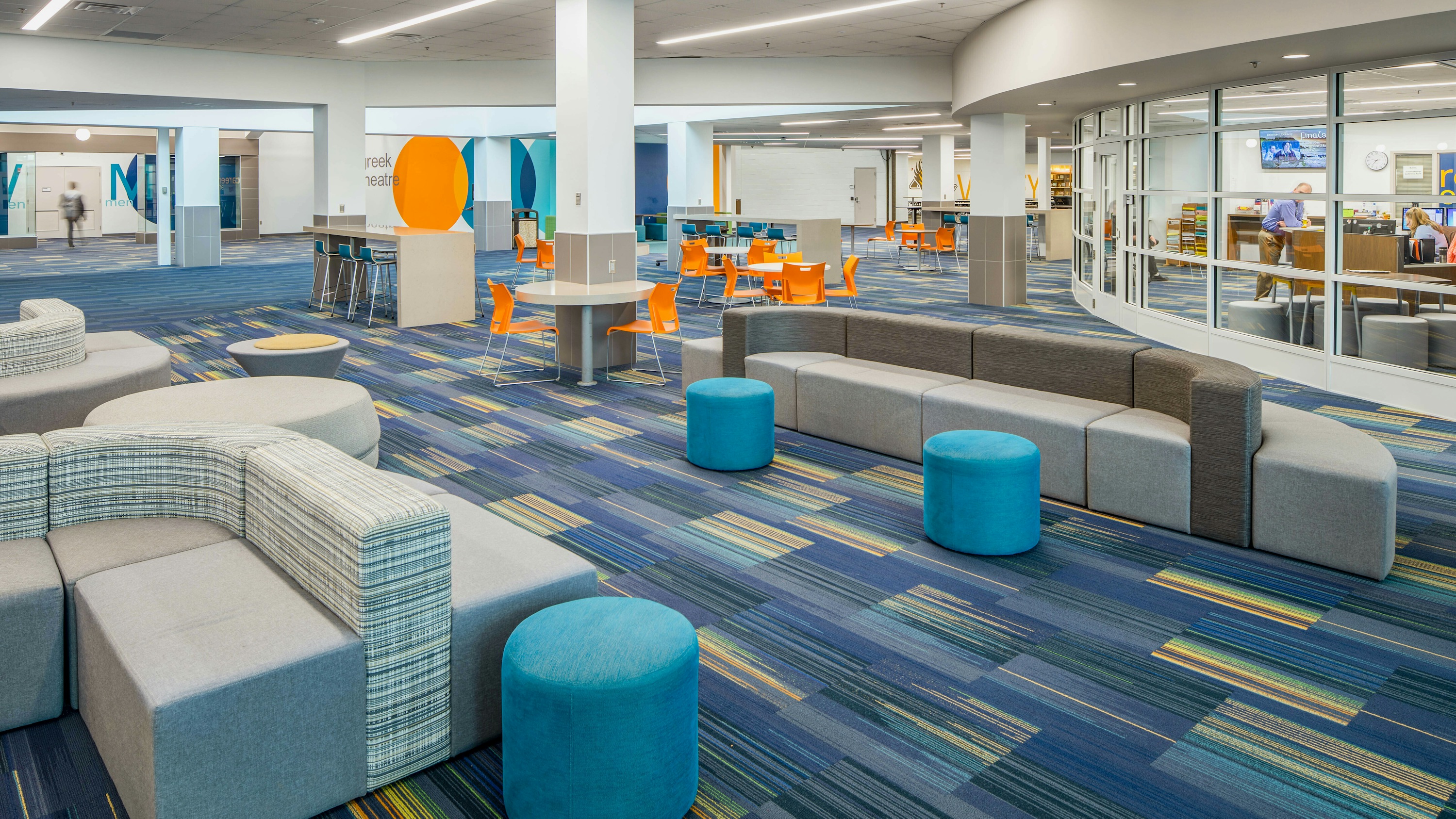
With 2023 around the corner, our education facilities designers are looking ahead to what’s coming next. The past few years have changed the ways we live and work, and these shifts are impacting a variety of client discussions about the built environment and the future of learning.
Educational settings in schools, from classroom renovations to brand new school builds, are transforming to create blended, flexible spaces that allow students to take the lead in their learning. Many districts across the country are also facing a shift in preparedness and an increased interest in Career Technical Education (CTE) exposure, where students of all ages can gain the academic and technical skills, knowledge and training necessary to succeed in future careers and to become lifelong learners.
As we prepare to enter a new year, we asked education leaders across our offices in Colorado, Minnesota, Illinois and Tennessee for the trends and predictions they foresee. Continue reading for their response to the question below:
Here’s what our team said about the design trends shaping educational facilities:
Schools commonly prefer to complete construction and renovation projects during the summer, but with the recent increase in materials prices and inflation, completing construction outside of the busy summer season can help save resources. Taking the necessary steps to work year-round instead of the 2-3 month summer window can lessen material costs, labor demands and overall price.
Additionally, adjusting for lead times and working backwards from expectations on end dates can help alleviate miscommunication on project schedules and aid in managing the overall budget. The sooner districts can start talking about and planning for new projects, the better.
While not necessarily a new concept in some districts, CTE spaces are increasing in high schools across the country to support career pathways programming for students. According to the US Department of Education, “Eight years after their expected graduation date, students who focused on career and technical education (CTE) courses while in high school had higher median annual earnings than students who did not focus on CTE.”
Schools are creating small learning communities in which hands-on learning can occur, including nursing, culinary arts, digital fabrication, science & engineering, yearbook/publications and more. Some districts are even collaborating extensively with local business partners to create community-driven legacies that emphasize local opportunities for graduates who may continue to live in the area.
Another trend continuing to grow in districts across the country is the addition of Early Childhood Centers (ECCs) into public school systems. While already a popular concept in some states, places like Illinois are seeing a rise in the creation of individual ECCs that feed directly into elementary schools within the district, especially with the support of state grants encouraging districts to design these crucial spaces.
ECCs provide a learning environment catered to the needs of the youngest learners as well as ample space for broader community use. They also ensure classroom amenities and window heights are age-appropriate for three and four-year-olds and provide a comparable learning experience for early childhood students and staff as they prepare to enter elementary schools with similar flexible learning spaces.
Even at the university level, mindsets and buildings are shifting to provide more hands-on experience to expose students to skilled labor opportunities and better prepare them for real-world careers. On many campuses, applied engineering buildings (AEBs) are creating spaces focused on collaborative learning to help students cultivate the knowledge and skills needed to be successful in the viable and emerging fields of applied engineering.
These buildings typically include flexible learning and laboratory spaces that can be reconfigured and updated to accommodate changing educational needs, evolving technology, faculty research, and industry partnerships. AEBs provide a hands-on learning environment that prepares students for a broad range of professional careers in industry, education, and government in critically needed engineering and technology disciplines and creates graduates who will be work-ready to apply their real-world knowledge to their professional decision-making process.
Our expert team is committed to serving as a trusted advisor to our clients and industry partners. Do you want to connect further with our team for your upcoming projects in 2023 and beyond? Get in touch today!